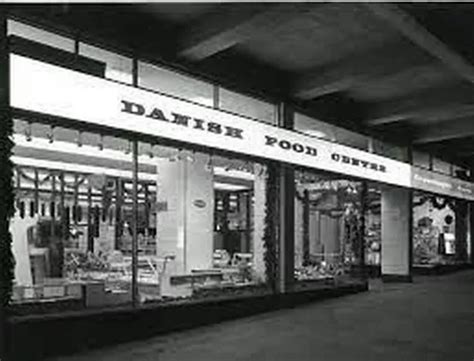
Nostalgia for bygone eateries is sweeping the nation as food enthusiasts reminisce about 20 beloved, yet now defunct, restaurants that have vanished from the culinary landscape, leaving behind cherished memories and signature dishes that are sorely missed. From family-friendly chains to unique dining experiences, these retro restaurant relics represent a significant part of American dining history.
For many, dining out is more than just a meal; it’s an experience woven with memories, family traditions, and a sense of community. As the restaurant industry evolves, some establishments, despite their initial success and loyal followings, inevitably close their doors, leaving behind a void that’s often filled with wistful longing. Yahoo! Life recently compiled a list of 20 such restaurants, each representing a distinct era and culinary trend, prompting a wave of nostalgia among those who remember them fondly. These are not merely places that served food; they were cultural landmarks where birthdays were celebrated, friendships were forged, and everyday moments were made special. The disappearance of these restaurants serves as a reminder of how much our dining habits and preferences have changed over time.
A Look Back at Culinary History
The list of vanished treasures includes restaurants that were once ubiquitous across the United States, each with its unique appeal. Among the most missed are chains that catered to families, offering affordable meals and kid-friendly menus. These restaurants often featured play areas or special promotions that made them a popular choice for parents looking for a hassle-free dining experience. Other restaurants on the list were known for their innovative concepts, such as tableside cooking or elaborate themed décor, creating an immersive dining experience that set them apart from the competition. The closure of these establishments often came as a result of changing consumer tastes, economic downturns, or simply the challenges of staying relevant in a highly competitive industry.
The Vanished 20
Here’s a deeper dive into some of the restaurants highlighted in the Yahoo! Life list, exploring what made them special and why they continue to be missed:
-
Howard Johnson’s: Once a ubiquitous sight along American highways, Howard Johnson’s was renowned for its distinctive orange roofs and extensive menu featuring 28 flavors of ice cream. Founded in 1925, the chain reached its peak in the 1960s and 70s, offering travelers a familiar and reliable dining option during the golden age of road trips. “Howard Johnson’s was more than just a restaurant; it was a symbol of Americana,” notes food historian Laura Shapiro. “Its standardized menu and recognizable branding provided a sense of comfort and predictability at a time when travel could be unpredictable.” However, as interstate highways bypassed many of the smaller towns where Howard Johnson’s restaurants were located, and as competition from fast-food chains intensified, the chain began to decline. The last remaining Howard Johnson’s restaurant closed in 2022, marking the end of an era.
-
Steak and Ale: Known for its dark wood paneling, cozy atmosphere, and affordable steak dinners, Steak and Ale was a popular destination for casual dining in the 1970s and 80s. The chain pioneered the concept of offering a “endless salad bar,” which became a signature feature that attracted many customers. “Steak and Ale offered a sense of affordable luxury,” explains restaurant industry analyst John Maxwell. “It was a place where families could celebrate special occasions without breaking the bank.” The chain faced financial difficulties in the late 2000s and ultimately filed for bankruptcy, leading to the closure of all its locations. Attempts to revive the brand have been unsuccessful.
-
Chi-Chi’s: This Mexican-themed restaurant chain was a hit in the 1980s and 90s, offering a festive atmosphere and a menu featuring popular dishes like fajitas and chimichangas. Chi-Chi’s was known for its lively atmosphere, often hosting mariachi bands and offering special promotions. However, the chain suffered a major blow in 2003 when a hepatitis A outbreak, traced to contaminated green onions, sickened hundreds of people and led to several deaths. The negative publicity from the outbreak severely damaged the chain’s reputation, and it eventually filed for bankruptcy and closed all its U.S. locations.
-
Horn & Hardart: An automat chain that peaked in popularity in the first half of the 20th century, Horn & Hardart offered a unique and efficient dining experience. Customers would insert nickels into vending machines to purchase freshly prepared dishes, from sandwiches and soups to pies and cakes. Horn & Hardart was particularly popular among working-class New Yorkers and Philadelphians, offering a quick and affordable meal option. “Horn & Hardart was a symbol of innovation and efficiency,” says historian David McCullough. “It was a place where people from all walks of life could come together and enjoy a good meal.” The chain declined in the mid-20th century as other dining options became more prevalent and as the cost of labor and ingredients increased.
-
Lum’s: Known for its hot dogs steamed in beer and its distinctive orange roof, Lum’s was a popular fast-food chain in the 1960s and 70s. The chain was founded in 1956 and quickly expanded across the United States, offering a menu that also included burgers, fries, and other classic American fare. Lum’s was known for its family-friendly atmosphere and its affordable prices. However, the chain struggled to compete with larger fast-food chains and eventually declined in the 1980s.
-
Ponderosa and Bonanza Steakhouse: These chains, often mentioned together due to their similar concept, offered affordable steak dinners in a casual, family-friendly atmosphere. They were known for their buffet-style salad bars and value-oriented pricing. At their peak, they were ubiquitous across the United States, but changing consumer preferences and increased competition led to a decline in their popularity. Many locations closed, although a few independently owned franchises still operate. These restaurants provided a crucial entry point for many into the world of steakhouse dining.
-
Pup ‘N’ Taco: Predating the dominance of major fast-food chains, Pup ‘N’ Taco was a California-based chain known for its unique menu items, including tacos, pastrami sandwiches, and “Pup” burgers. Its distinctive logo and colorful restaurants were a fixture in Southern California. While the name has disappeared, many locations were converted to Taco Bell restaurants after a corporate acquisition. However, the unique menu items remain a fond memory for many Californians.
-
Wagon Train: Featuring a Western theme, Wagon Train restaurants offered a unique dining experience with chuckwagon-style food served in a rustic setting. They were known for their large portions and family-style service. While not as widespread as some other chains, they left a lasting impression on those who experienced their themed atmosphere.
-
Red Barn: This fast-food chain featured a distinctive barn-shaped building and a menu that included burgers, chicken, and fish. Red Barn was a popular alternative to McDonald’s and Burger King in many areas. While it never achieved the same level of national recognition as its larger competitors, it held a special place in the hearts of those who grew up with it.
-
Farrell’s Ice Cream Parlour: Farrell’s was more than just an ice cream shop; it was an experience. Known for its over-the-top sundaes, boisterous atmosphere, and employees who would parade around the restaurant with giant desserts, Farrell’s was a popular destination for birthday parties and special occasions. The chain has attempted revivals in recent years, but the original magic has been difficult to recapture.
-
Gino’s Hamburgers: A regional chain in the Mid-Atlantic states, Gino’s was founded by Baltimore Colts football legend Gino Marchetti. It was known for its high-quality hamburgers and its association with the Colts. The chain was eventually acquired by Marriott Corporation and converted into Roy Rogers restaurants, but the Gino’s name has been revived in recent years.
-
White Tower Hamburgers: Modeled after White Castle, White Tower was a competing chain that offered similar small, square hamburgers. It was known for its distinctive white buildings and its affordable prices. While it never achieved the same level of national recognition as White Castle, it was a popular option in many areas.
-
VIP’s: Primarily located in the Pacific Northwest, VIP’s was a coffee shop-style restaurant chain known for its extensive menu and comfortable atmosphere. It was a popular gathering place for locals and travelers alike.
-
Woolworth’s Lunch Counter: A fixture in Woolworth’s department stores, the lunch counter offered a quick and affordable meal option for shoppers. It was a popular destination for lunch and snacks, and it played a significant role in the Civil Rights movement, as many lunch counters were the site of sit-in protests.
-
Burger Chef: This fast-food chain was known for its “Funmeal,” a kids’ meal that predated McDonald’s Happy Meal. Burger Chef was a major competitor to McDonald’s in the 1970s, but it was eventually acquired by Hardee’s and the Burger Chef name was phased out.
-
Toddle House: This diner chain was known for its distinctive architecture and its 24-hour service. Toddle House restaurants were small and cozy, and they offered a limited menu of breakfast and lunch items.
-
Clifton’s Cafeteria: A Los Angeles landmark, Clifton’s Cafeteria was known for its elaborate themed décor, which included waterfalls, redwood trees, and other natural elements. It offered a unique dining experience that attracted locals and tourists alike.
-
Henry’s Hamburgers: This chain was known for its affordable hamburgers and its distinctive logo. Henry’s Hamburgers restaurants were simple and no-frills, and they offered a limited menu of classic American fare.
-
Big Boy Restaurants: While some Big Boy locations still exist, the chain has significantly declined from its peak. Big Boy was known for its distinctive Big Boy mascot and its menu of classic diner fare. The chain has undergone several ownership changes in recent years.
-
Minnie Pearl’s Chicken: Named after the famous country comedian, Minnie Pearl’s Chicken was a short-lived fast-food chain that attempted to capitalize on Pearl’s popularity. The chain struggled to compete with established fast-food brands and quickly disappeared.
The Reasons Behind the Closures
Several factors contributed to the demise of these beloved restaurants. Changing consumer tastes, increased competition, economic downturns, and shifting demographics all played a role. Many of these restaurants failed to adapt to the evolving demands of the dining public, while others simply couldn’t compete with the marketing power and economies of scale of larger chains.
-
Changing Consumer Tastes: As consumers became more health-conscious and adventurous in their dining choices, many of the older restaurants struggled to keep up. Menus that were once considered innovative became outdated, and restaurants that failed to offer healthier or more diverse options lost customers.
-
Increased Competition: The restaurant industry is highly competitive, with new restaurants opening every day. Established chains faced increasing pressure from fast-casual restaurants and celebrity chef-driven concepts, making it difficult to maintain market share.
-
Economic Downturns: Economic recessions and periods of high inflation can significantly impact the restaurant industry. Consumers tend to cut back on discretionary spending during economic downturns, leading to lower sales and restaurant closures.
-
Shifting Demographics: Changes in population demographics can also affect the success of restaurants. Restaurants that catered to specific demographics may have struggled as those demographics shifted or declined.
The Enduring Appeal of Nostalgia
Despite their disappearance, these retro restaurants continue to hold a special place in the hearts of many. Nostalgia is a powerful emotion, and the memories associated with these restaurants evoke feelings of comfort, happiness, and connection to the past. For many, these restaurants represent a simpler time, when dining out was a more affordable and accessible experience.
The interest in these vanished restaurants also reflects a broader trend of nostalgia for vintage Americana. As society becomes increasingly fast-paced and technology-driven, many people yearn for the perceived simplicity and authenticity of the past. This nostalgia is often expressed through an interest in vintage fashion, music, and design, as well as a fondness for the restaurants and other businesses that defined previous generations.
The resurgence of interest in retro dining experiences can also be seen in the popularity of themed restaurants and diners that attempt to recreate the atmosphere of the past. These establishments often feature vintage décor, classic menu items, and a focus on customer service, appealing to those who miss the charm and character of bygone eras.
The Legacy of Vanished Restaurants
While these 20 restaurants may be gone, their legacy lives on in the memories of those who frequented them. They represent a significant part of American dining history, and they serve as a reminder of how much our culinary landscape has changed over time. These restaurants were more than just places to eat; they were community gathering places, family traditions, and cultural landmarks that helped shape the American experience.
Their disappearance also underscores the importance of adapting to change and staying relevant in a dynamic industry. Restaurants that fail to innovate and meet the evolving needs of consumers risk becoming relics of the past. However, even as new restaurants emerge and old ones fade away, the memories of these vanished treasures will continue to be cherished by those who remember them fondly.
The absence of these restaurants also highlights the transient nature of trends and tastes. What was once popular and successful can quickly fall out of favor, underscoring the challenges of maintaining long-term success in the restaurant industry. The stories of these vanished restaurants serve as a cautionary tale for current and future restaurateurs, reminding them of the importance of staying ahead of the curve and adapting to the ever-changing demands of the dining public.
Frequently Asked Questions (FAQ)
-
Why did Howard Johnson’s close? Howard Johnson’s decline stemmed from a combination of factors, including increased competition from fast-food chains, the construction of interstate highways that bypassed their locations, and a failure to adapt to changing consumer preferences. The last original Howard Johnson’s restaurant closed in 2022, marking the end of an era.
-
What caused the Chi-Chi’s hepatitis A outbreak? The 2003 hepatitis A outbreak at Chi-Chi’s restaurants was traced to contaminated green onions. The outbreak led to hundreds of illnesses and several deaths, severely damaging the chain’s reputation and contributing to its bankruptcy.
-
What was unique about Horn & Hardart? Horn & Hardart was an automat, a type of restaurant where customers purchased food from vending machines by inserting coins. This innovative concept was popular in the early to mid-20th century, offering a quick and affordable meal option.
-
Why did Steak and Ale go out of business? Steak and Ale faced financial difficulties in the late 2000s and ultimately filed for bankruptcy. The chain struggled to compete with other casual dining restaurants and failed to adapt to changing consumer tastes. Attempts to revive the brand have been unsuccessful.
-
Are any of these restaurants still operating? While many of the restaurants on the list have closed completely, a few, like Big Boy, still have some locations operating, often as independently owned franchises. However, these chains have significantly declined from their peak in popularity.
The Long-Term Impact on the Restaurant Industry
The disappearance of these restaurant chains has had a profound impact on the broader restaurant industry, shaping trends and influencing the way restaurants operate today. Their rise and fall offer valuable lessons about the importance of innovation, adaptability, and customer service.
One of the key takeaways from the stories of these vanished restaurants is the need for continuous innovation. Restaurants that fail to adapt to changing consumer tastes and preferences risk becoming obsolete. This includes updating menus with healthier and more diverse options, embracing new technologies, and creating unique dining experiences that set them apart from the competition.
Another important lesson is the importance of customer service. Restaurants that prioritize customer satisfaction and build strong relationships with their patrons are more likely to thrive in the long run. This includes providing friendly and efficient service, creating a welcoming atmosphere, and addressing customer concerns promptly and effectively.
The success of these vanished restaurants also highlights the power of branding and marketing. Restaurants that develop strong brands and effectively communicate their value proposition to consumers are more likely to attract and retain customers. This includes creating a memorable logo, developing a compelling brand story, and using social media and other marketing channels to reach their target audience.
Finally, the stories of these restaurants underscore the importance of financial management. Restaurants that are well-managed financially are more likely to weather economic downturns and other challenges. This includes controlling costs, managing cash flow, and making sound investment decisions.
In conclusion, the disappearance of these 20 retro restaurants serves as a reminder of the dynamic and ever-changing nature of the restaurant industry. While these establishments may be gone, their legacy lives on in the memories of those who frequented them and in the lessons they offer for current and future restaurateurs. Their stories remind us of the importance of innovation, adaptability, customer service, branding, and financial management in achieving long-term success in the competitive world of dining. The echoes of their menus, ambiance, and cultural impact continue to resonate, shaping the culinary landscape in ways both subtle and profound.









